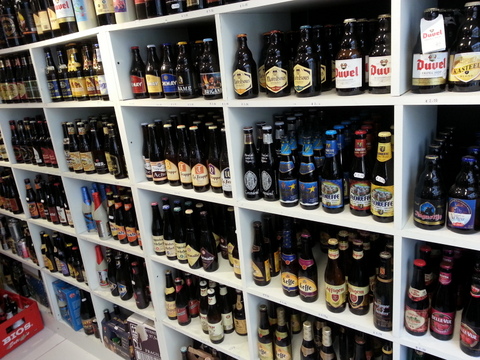
But should every venue stock craft beer?
On the eve of Australia’s biggest week-long festival of great beer, a week when our love of and advocacy for great beer will be at its peak, it’s also worth remembering that hubris can ride hand-in-hand with hype.
 Craft beer is on a monumental upswing at the moment, something that gladdens the heart of a Brisbanite who would not long ago shed a tear of joy when a bar or restaurant stocked both Coopers Sparkling and Little Creatures Pale Ale.
Craft beer is on a monumental upswing at the moment, something that gladdens the heart of a Brisbanite who would not long ago shed a tear of joy when a bar or restaurant stocked both Coopers Sparkling and Little Creatures Pale Ale.
However, amidst all of the excitement of bars with fridges groaning under the weight of 200 bottle beers and a dozen beers on tap, should we also keep in mind thequestion, “but how many is too many?” And even “should every bar, bottleshop and restaurant stock craft beer?”
After lagging behind in the national craft beer stakes for a long time, craft beer is even more popular than beards in Brisbane these days and it seems that every new bar and bistro is trumpeting its beer list, with how many and what beers on offer being a big selling point.
While this question of ‘how many is too many’ has been been simmering for a while, the idea of whether some venues should be offering tap beer at all was prompted by a recent visit to one of Brisbane’s ever growing band of new small bar and bistros.
The visit to the small city rim bistro, a venue that has been celebrated by bloggers and food writers since opening at the start of the year, revealed a bank of 8 taps, with six beers and two ciders. The beer list was impressive, with a good mix of beers from lager to stout, and including a number of national craft icons. The list was certainly impressive…until I actually drank.
The first beer – a premium lager with craft beer stylings – was a textbook example of stale and oxidised. Wet cardboard, stale bread, a hint of cabbage and metal were the dominant flavours. The second beer, a beer that is normally defined by hops, was in this case defined by sherry. While bitterness was still high, none of the dancing tropical fruit aroma was present and it left the beer coarsely bitter and unbalanced. With low hopes I tried the resident stout and was at least pleased to find that stouts do indeed hide many sins which, in this case, was fortunate.
Now, I don’t pretend to have a forensic beer palate. Instead, I take the view that I I am detecting these sorts of things it is more of a argument for how bad the problem is than how developed my tastebuds. There were undoubtedly problems. I shot a note to the distributor to find out how often he delivered to this venue and was advised that he hadn’t since it opened several months before. Presumably the beer had been pouring since.
So, we have a venue that – by all accounts – is doing some great food, is a wonderful little venue and and has at least been thoughtful in the beers it has chosen serving beer that has been pouring for more than three months. One of the beers may have been brewed to survive a journey to India, but it was defeated by bad handling in Brisbane.
As Brisbane embraces craft beer and small venues, I shudder to think how many people have been having these beers as their first experience of craft beer and thinking that’s what craft beer is.
This venue is a small venue. Beer is not its focus. Eight taps is far too many for it to be turning over. If it is not getting through its lightest flavoured craft beer – the lager – before it stales (and possibly after 3 months), I would be arguing that it should not be serving tap beer at all.
While this was probably the clearest example of the problem, it is a problem that is growing as quickly as the burgeoning bar scene. You can walk into a dozen bars with astoundingly extensive beer lists and see next-to-no bottled beer being consumed. In some cases, beer is still being sold that was from a one-off import more than 18 months ago.
While craft beer drinkers love to throw off at ‘mega swill brewers’, I am yet to meet a brewer – or even a sales rep – in these companies who is not concerned about the drinking quality of their product at the tap. Much of the industrialisation that has occurred in the brewing industry has been around getting beer to market in better condition and keeping it that way for longer. Even they don’t put tap beer into many small restaurants and bistros. They know its not good for it.
Craft beer is a highly perishable product. On their labels, many labels urge you to treat it like milk. And yet, in our enthusiasm for bigger selections and more craft beer, few seem to be asking the questions, “How many is too much” and “Is craft on tap appropriate for a venue at all?”
We really need to start. Craft beer will be the only loser from bad craft beer.



